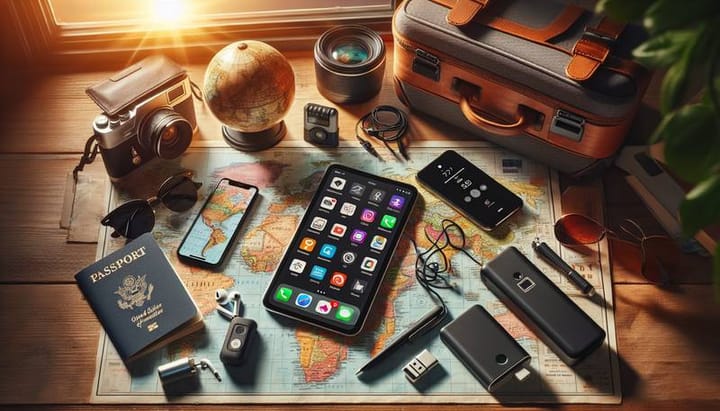Tips for Effective Battery Management on Devices

Welcome to the ultimate guide on keeping your device's battery fit and fighting in this digital age where our reliance on smartphones, tablets, and laptops is ever-increasing. The annoyance of a draining battery when you need it the most can be a headache - be it during an important call, while navigating a new place, or in the midst of a gripping game. The good news? There are several strategies and habits you can adopt to extend the battery life of your devices. Keep reading to learn about the best battery management practices that not only prolong the lifespan of your battery but also enhance the overall performance of your device. Let's dive into the electrifying world of battery optimization with a serious but entertaining twist!
Understand Your Device's Battery Usage
The first step to effective battery management is grasping how your device consumes power. Modern devices, especially smartphones, come equipped with built-in battery usage analyzer tools. These tools provide a wealth of information about which applications and operations are depleting your battery the most. To find this information, head over to the settings on your device, and look for the battery section. Here, you'll often find a detailed list sorted by the percentage of battery each app uses. Some systems even show how long each app has been active on your screen or running in the background. It's crucial to regularly check this list as it can offer insights that lead to easy battery-saving wins. For example, if you notice a seldom-used app draining an unusually high amount of battery, you have a clear action item: restrict that app's background activity or uninstall it entirely. Knowledge is power, and in this case, it literally saves it too!
Adjust Your Screen Brightness and Timeout Settings
It's no secret that your device's display is one of the largest consumers of battery power. Brighter screens use more energy, and if your screen is on for longer periods of time, you're going to see a faster battery drain. Automatic brightness is a feature that automatically adjusts your screen's brightness based on ambient light levels. Although it's convenient, it's not always efficient as it can sometimes make the screen brighter than necessary. A better strategy is to manually set your screen brightness to the lowest level that is comfortable for your eyes. As for the screen timeout, this is the length of time the screen stays on after you've stopped interacting with your device. Lowering this setting so the screen turns off quicker when not in use can significantly save battery life. And don't worry, you won't have to continually wake your device; modern devices are equipped with smart sensors that can detect when you are looking at the screen to keep it awake when necessary.
Update Your Device Regularly
Software updates can often feel like a chore, with pop-ups and notifications nudging us incessantly. However, these updates are crucial for optimal battery performance. Developers constantly refine and enhance the software to make it more efficient, which includes making better use of your device's battery. Most updates come with improvements to the existing power management protocol, bug fixes that previously drained the battery, and enhancements that allow the device to operate smoother, requiring less energy. It's essential to make sure your device is up-to-date with the latest software. This can usually be done easily through the device's settings, where you can check for updates and download them. Make it a habit to regularly check for updates to ensure your device's battery management is as efficient as possible.
Use Power-Saving Modes Wisely
Almost every device nowadays features some kind of power-saving mode. These modes are specifically designed to extend your battery life when it's running low by reducing the device's functionality. When activated, non-essential features might be restricted, such as background data sync, location services, or crisp screen resolution. While power-saving modes can be incredibly helpful in a pinch, they should be used judiciously. Being in this mode can limit the full experience of your device, so it's best to activate it manually when you know you're going to need the extra battery life. Some devices also allow you to customize which features are altered in power-saving mode, so take some time to tailor these settings to match your needs without compromising too much on usability.
Limit Background App Refresh
Background app refresh is a feature that allows apps to update their content in the background while you're not using them. While it can keep your apps content fresh, it can also drain your battery significantly. Limiting the frequency or turning it off completely for certain apps can make a big difference in battery life. To manage this, dive into your device's settings and look for the section that governs background app refresh. Here, you can take a fine-tooth comb to your apps, considering which ones truly require refreshing in the background. For instance, you might want an email app to keep updating while not in use, but perhaps a gaming or shopping app doesn't need to refresh until you open it again. Be strategic in your choices, aiming for a balance between functionality and battery efficiency.
Invest in a Quality Charger
Not all chargers are made the same. Cheaper, non-brand chargers can not only damage your device but affect battery life too. They might not offer the optimal voltage or current for your device, leading to inefficient charging and even long-term battery damage. It's crucial to use a charger that is designed for your device or a high-quality third-party option that adheres to your device's power requirements. Additionally, consider the benefits of fast chargers and those that stop supplying power once the battery is full to avoid overcharging. Remember, investing in a quality charger is just like choosing a good fuel for your car – it keeps the 'engine' running smoothly and extends its life.
Replace Your Battery if Necessary
As with all things, batteries have a lifespan. When you've tried every tip and trick, and your battery still doesn't hold a charge like it used to, it might be time for a replacement. Swapping out your old battery for a new one can revitalize your device, making it last longer and perform better. This doesn't necessarily mean you need to replace your entire device. Many manufacturers offer battery replacement services, and there are reputable third-party companies that can do the job as well. However, it's crucial to ensure the replacement is high quality and compatible with your device to avoid potential harm. If you're uncomfortable with replacing the battery yourself, professional services are the best route to ensure safety and correct installation.
To conclude, managing your device's battery life isn't just about a single quick fix— it’s about adopting a series of smart habits that add up to significant savings on power. Understanding how your device uses power, optimizing screen settings, keeping up-to-date with software, smartly utilizing power-saving modes, limiting background app refreshes, using high-quality chargers, and knowing when it's time for a battery replacement are all instrumental steps in prolonging the life of your battery. Start integrating these practices into your tech routine, and you’ll be amazed at how much more you can get out of each charge. Remember, the power to maximize your device's battery life is literally in your hands – use it wisely and keep your device powered up for all those important life moments that technology helps you capture and enjoy.


